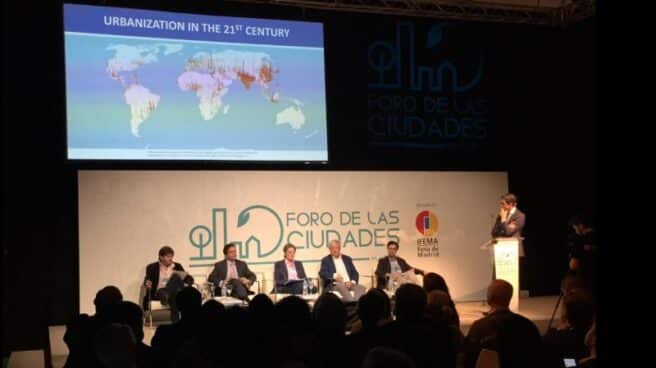

Forum of the cities of Ifema (Madrid).
In recent years, factors such as climate change and alternative energy sources have set and continue to set the sustainable development agenda. For this reason, from three countries on three different continents such as South Korea, Saudi Arabia and Mexico, they decided to carry out ambitious “cities of the future” projects.
The effects of pollution on both the planet and its inhabitants have highlighted the need to change quickly and find answers. This also includes the concept of cities, bearing in mind that the answers to questions about how to make them sustainable will be those that create the urban environment of tomorrow.
The need to move towards smart city models and be at the forefront of sustainable development has placed the holding of conventions and expert forums to discuss and provide solutions from different perspectives on the agenda.
Without going into too much detail, the Madrid Cities Forum held last month brought together over 260 speakers including local governments, international organizations, academia, citizens and experts on various topics to discuss topics such as urban planning, mobility. and the role of technology in urban planning.
Oceanix in South Korea
Some of the major environmental issues include rising sea levels and flooding, which sometimes destroy infrastructure and even cities. This ambitious project is a response to the lack of land and climate threats associated with the coastal city of Busan (South Korea).
OCEANIX-Busan is the world’s first prototype of a floating sustainable community based on water urbanism. Floating platforms, in addition to being stable, allow coastal cities to expand seaward, adapting to rising and falling levels.
Each of these pillars has a different purpose, from serving as a research center to permanent housing, in addition to 30,000 m2 of area devoted to activities, greenhouses and production posts.
In its initial version, OCEANIX-Busan will have an area of 6 hectares and will be able to host a community of 12,000 people, with the ability to grow according to the needs of its hometown on the mainland.
Neom in Saudi Arabia
Called “new future”, this city, which will be located north of the Red Sea, 1,500 km from Riyadh, is designed to create a new city model based on the premise of sustainable living and the use of the most advanced technologies. edge technologies.
With a length of 26,000 km, it will be fully powered by renewable energy, both solar and wind, in addition to using 405 km of coastline for desalination and thus achieving zero CO2 emissions.
The metropolis will have technology as its main element and it will be used in every possible way. In fact, it will have an artificial moon to light up the city at night and artificial clouds to moderate the area’s high temperatures during scheduled rains.
NEOM aims to be a 100% automated city, a goal it aims to apply to everything from new ways of growing and processing food to building pollution-free homes.
However, one of the best examples of automation can be found in the agreement reached with Volocopter to offer the first flying taxi service.
Smart forest city Cancun in Mexico
The main goal of this project, designed for the Mexican city of Cancun, is to absorb 116,000 tons of carbon dioxide. For this, the city plan provides for a city with 400 hectares of green space and 7.5 million plants, which also allows the storage of 5800 tons of CO2 per year.
Based on renewable energy, Cancun Smart Forest City is designed to have a desalination tower at the entrance to the city, which would allow it to supply water. In addition, a system of solar panels, growing areas and greenhouses will make it self-sufficient and also become an example of a circular economy.
Today, the “city of the future” must include a sustainable mobility system, and Cancun Smart Forest City has developed an all-electric indoor mobility network and navigable waterways within the city that eliminate the presence of private cars.
Although, according to the creators of the project, the city is designed so that residents have all the services at a distance that can be overcome on foot or by bicycle.
From mobility to construction, several countries are promoting pioneering actions to win the race for the cities of the future.
Source: El Independiente